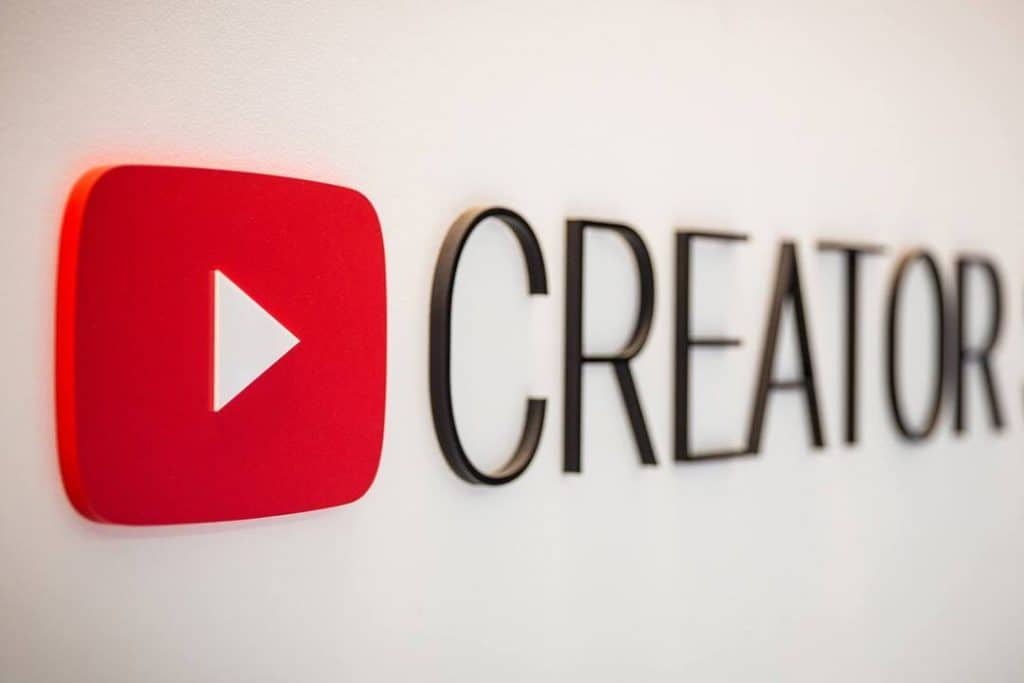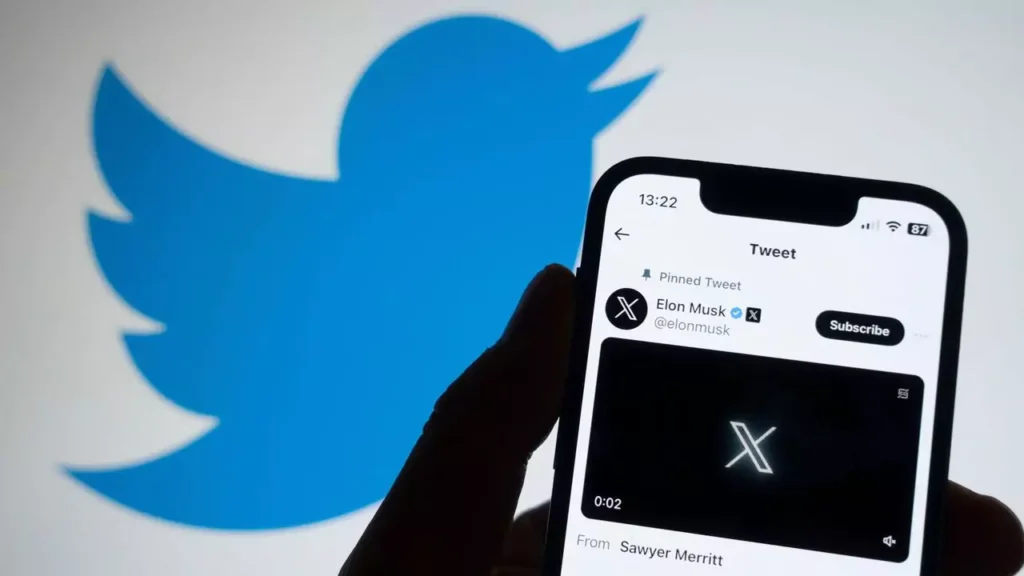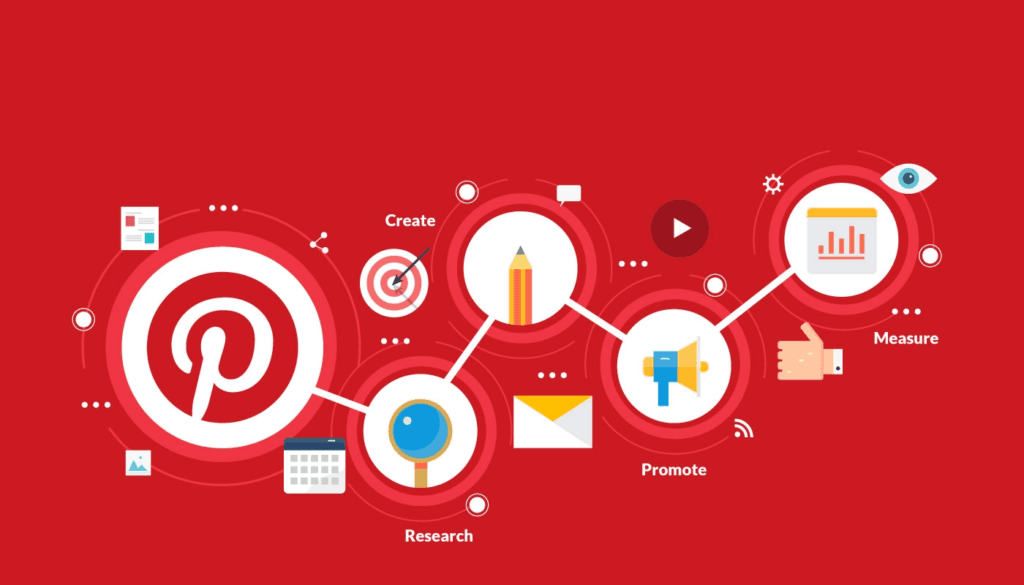Guide to Creating a Winning Social Media Strategy
Social media has become an indispensable part of marketing for businesses of all sizes. With over 4.8 billion active social media users worldwide, platforms like Facebook, Instagram, X (Twitter), LinkedIn, and TikTok offer unparalleled opportunities to build brand awareness, engage with customers, drive traffic, and boost sales.
However, creating social media accounts and posting random content will not help you achieve your goals. You need a thoughtful social media strategy aligning with your business objectives.
This comprehensive guide will teach you how to develop an effective, integrated social media strategy from scratch. You'll learn how to:
- Set goals and KPIs
- Research your target audience
- Choose the right social platforms
- Create engaging content
- Promote your content
- Measure and analyse results
- Continuously improve your strategy
Ready to take your social media game to the next level? Let's get started!
Table of Contents
Why You Need a Social Media Strategy

With so many social platforms and features available, jumping in without much planning is tempting. However, this scattershot approach won't deliver meaningful results. A documented social media strategy helps you define what you want to achieve and how to get there efficiently. Here are some key benefits of having a plan:
Provides Focus and Direction
A strategy keeps your efforts focused on your core goals. Rather than getting distracted by every new platform or tactic, you'll have a roadmap to follow. It prevents wasted time and resources on random activities that don't align with your objectives.
Helps Determine Optimal Social Media Mix
With a strategic approach, you can select the platforms that make the most sense for your brand based on your target audience, content format, engagement goals, and resources. Pursuing every network can stretch your team too thin.
Enables Measurement
How will you know if your social media efforts are successful if you don't establish key performance indicators (KPIs) and metrics upfront? These could include brand awareness, reach, engagement rate, conversions, etc. A strategy allows you to track progress against your goals.
Brings Consistency
A documented strategy with guidelines ensures consistency across channels, campaigns, and content. This strengthens your brand identity and presence. Without it, you risk diluting your brand as social accounts diverge.
Allows Agility
The social media landscape evolves rapidly. A flexible strategy empowers you to seize new opportunities while staying focused on your core goals. You can test and optimise as changes occur.
Gets Buy-In
A well-defined strategy gets internal and external stakeholders aligned on priorities and expectations. This facilitates collaboration and accountability.
In summary, a social media strategy is essential to maximise your return on investment in these platforms. The upfront effort to develop one pays dividends in focus, efficiency, and results.
How to Create a Social Media Marketing Strategy

Now that you're convinced about the value of having a strategy, let's explore the process to create one tailored to your business. Follow these steps:
Set Goals and KPIs
Like any marketing effort, your social media strategy should align with your business goals. Start by defining 3-5 specific, measurable objectives you want to achieve through social platforms. Common goals include:
- Increase brand awareness or impressions
- Engage with target audience X times per month/quarter
- Acquire X new leads or customers
- Drive X visits to your website
- Boost sales by X%
- Improve brand sentiment or mentions
Then, determine relevant key performance indicators (KPIs) for each goal. KPIs are quantifiable metrics that measure progress, such as:
- Follower growth
- Engagement rate
- Shares, likes, comments
- Mentions and hashtags
- Lead generation and conversions
- Traffic and sales
Be sure to set realistic benchmarks. This will help you evaluate the effectiveness of your activities.
Research Your Audience
An effective social strategy is tailored to your audience. Thoroughly research existing and potential customers. Look at demographics like age, gender, income level, education, location, and role. But also consider psychographics:
- What are their needs and pain points?
- What do they value?
- What brands do they currently like and why?
- Where and how do they consume content?
- What motivates or interests them?
Social media analytics and surveys provide audience insights. Personas and buyer journeys also help understand customers. This knowledge will inform your strategy and content.
Select Social Platforms
Considering your goals and audience, thoughtfully choose platforms that align with your resources, content format, and engagement preferences. Avoid spreading yourself too thin.
Start by looking at where your audience is most active, then consider factors like:
- Content types supported – video, audio, images, text, live video
- Audience size and demographics
- Ability to segment and target
- Ad formats and options
- Analytics and metrics available
- Resources required and associated costs
You may choose platforms like Facebook, Instagram, LinkedIn, X, YouTube, Pinterest, TikTok, Snapchat, and NextDoor. Be strategic rather than trying to pursue every network.
Create Engaging Content
Quality content builds brand awareness and trust with your audience. Map out the types of content you'll create across text, images, video, live streams, stories, audio, and more. Consider:
- Educational content – how-tos, tips, tutorials
- Thought leadership – industry perspectives, trends
- Behind-the-scenes – photos, videos, interviews
- User-generated content – reviews, testimonials, submissions
- Interactive content – polls, surveys, Q&As
- Personalised content – exclusive offers, loyalty perks
Mix evergreen and time-sensitive content. Use visuals and videos to grab attention—craft headlines for maximum impact. Remember to optimise for mobile. Capitalise on trends but stay on-brand. Plan content calendars and workflows to ensure a steady stream.
Promote Your Content
You've created fantastic content – now get it in front of your audience. Promotion strategies include:
- Organic – relevant hashtags, tagging influencers or brands, sharing user-generated content
- Paid – social ads, amplifying posts, sponsorships
- Cross-promotion – sharing content across your platforms and channels
- Influencer marketing – collaborations with relevant influencers
- Contests and sweepstakes – drive shares, likes, follows
- Chatbots – automated interactions to qualify leads
Leverage platform-specific features like Facebook Groups, X Chats, Instagram Shoppable Posts, LinkedIn articles, etc. Promote content consistently without a blatant sales pitch.
Measure and Analyse Performance
Monitoring metrics to assess what's working and where improvements are needed is essential. Each platform provides data like:
- Impressions/reach
- Engagement rate
- Link clicks
- Follower growth
- Traffic
- Conversions and sales
Tools like Google Analytics, Sprout Social, Hootsuite, Meltwater, Iconosquare, Talkwalker, BuzzSumo, and more enable more profound analysis. Review progress regularly and create reports. Use insights to refine your strategy and content.
Continuously Improve and Evolve
Social media changes rapidly. Stay agile to exploit new trends, platforms, features, and opportunities. Keep researching your audience. Test new content formats and cadences. Experiment with emerging social media. Analyse performance data, optimise what's working, and tweak what's not.
Refresh your social media strategy quarterly or annually to keep it current. Ongoing refinement ensures you deliver maximum value and stay ahead of shifts in the social landscape.
Executing this strategic approach requires commitment and resources but pays off exponentially. Now, let's explore best practices and examples for each central platform.
Facebook Marketing Strategy

With 3 billion monthly active users, Facebook remains a powerhouse that almost every brand should incorporate into their strategy. Here are tips for success:
Set Specific Goals
Given Facebook's vast capabilities, zero in on a few concrete goals tied to your audience and business objectives. Examples include:
- Increase brand awareness/reach
- Drive website traffic
- Generate leads/conversions
- Boost engagement
- Acquire customers
- Strengthen loyalty
Target Your Audience
Use Facebook's detailed targeting options to segment your audience and serve relevant content:
- Location – target local, regional, or country-specific users
- Demographics – age, gender, education level, relationship status
- Interests – hobbies, behaviors, brand affinity
- Behaviors – purchase history, business roles, mobile users
Create customised audiences from your email lists and website visitors. Test different segments.
Choose Ad Formats Strategically
With a budget, ads amplify your reach and results. Consider these formats:
- Facebook feed ads – high visibility in the news feed
- Stories – full-screen, immersive ads in Facebook/Instagram stories
- Carousel – swipeable multi-image ads
- Video – grab attention with sight, sound and motion
- Image – showcase products visually
- Collection – showcase product catalogue
- Lead form – get sign-ups without leaving Facebook
Target each ad to the most relevant audience and optimise based on performance. Headline tests can further boost results.
Create Engaging Content
Follow the 80/20 rule – share 80% useful, non-promotional content and 20% direct promotional messages or offers. Mix text, images, and video.
- Share user-generated content
- Go behind the scenes
- Create shareable infographics
- Curate relevant news and articles
- Run contests and sweepstakes
- Post Q&As and interviews with experts
- Share data-driven content like reports, guides, templates
Tap into Facebook Tools
- Facebook Pixel – track website conversions from Facebook
- Facebook Groups – connect with your niche community
- Live Video – stream real-time videos to engage your audience
- Product Catalog – tag products for an optimised shopping experience
- Messenger – chat with prospects
- Events – promote events and sell tickets
- Peer-to-peer fundraising – launch a fundraiser for cause marketing
Continuous testing and optimising your content keeps it fresh and relevant.
YouTube Marketing Strategy

As the #2 search engine and second most prominent social platform, YouTube presents immense marketing potential with over 2 billion monthly logged-in users. Here's how to maximise it:
Set Goals
Given YouTube's massive reach, it can support several goals, including:
- Drive awareness and visibility for your brand
- Establish thought leadership
- Promote your products
- Drive website traffic
- Generate leads and sales
Whatever your focus, ensure you have the resources to sustain regular video creation and optimisation.
Know Your Audience
Leverage YouTube Analytics to gain insights into viewers – location, age, gender, watch time, traffic sources, favourite content, and more. Use this to shape your content and strategy. Create viewer personas.
Strategically Choose Video Types
Map out a content calendar for your channel with a mix of videos:
- Product features, demos and tutorials
- Expert interviews or panel talks
- Industry insights and trend videos
- Case studies and customer testimonials
- Behind-the-scenes footage
- FAQs
- Influencer collaborations
- Live streams
Shorter videos often attract more views, but consider a mix.
Optimise Your Videos
- Custom thumbnails and titles – catch attention and describe the content
- Descriptions – include relevant keywords and links, transcript
- Cards and end screens – link to your other videos and website
- Playlists – organise your videos into logical categories
- Captions – increase accessibility and SEO
Promote Your Videos
- Suggest videos on your channel through links, cards and annotations
- Promote new videos on your other social channels
- Run video ads to expand reach
- Pitch your videos to relevant websites for syndication
- Collaborate with influencers in your niche to expand your reach
- Interact with commenters and build community
Continuously analyse performance data to refine your YouTube strategy. What content resonates best with your audience? How can you improve engagement? Which videos drive the most traffic and sales? Iterate based on these insights.
Instagram Marketing Strategy

With over 2.5 billion monthly active users, brands must pay attention to Instagram as a visual platform. Here are some tips for success:
Set Goals
Instagram can help you:
- Increase brand awareness/reach
- Engage with your audience
- Drive website traffic
- Showcase products
- Humanise your brand
- Generate leads and sales
Define your primary objective(s) to steer your strategy.
Know Your Audience
Leverage Instagram audience insights to understand:
- Age, gender, location
- Active hours
- Hashtags and accounts they follow
Create buyer personas based on your ideal customers.
Post High-Quality Photos and Video
Visually compelling, consistent content attracts followers and engagement:
- Product photos/videos
- User-generated content
- Behind the scenes
- Video tutorials
- Infographics and quotes
- Stories
Optimise images and captions for mobile. Use relevant hashtags strategically without going overboard. Engage others by featuring their content.
Leverage Features
- Instagram Shop – tag products in posts that users can purchase
- Shoppable posts – add shoppable tags directly on photos
- Product stickers in Stories – link to products
- AR filters – create immersive augmented reality experiences
- Live video
- IGTV – post long-form vertical videos
- Reels – post fun 15-30-second multi-clip videos
Run Targeted Ads
Instagram ads help expand your reach and engagement:
- Photo ads
- Carousel ads
- Video ads
- Collection ads
- Explore ads
- Story ads
- Reels ads
Target by interests, behaviours, age, location and more. Test different formats, placements and audiences.
Track performance through Instagram Insights and ads metrics. Optimise your visual content strategy based on what resonates most with your audience.
LinkedIn Marketing Strategy

With 950+ million members, LinkedIn is the go-to professional social network. Integrate it into your B2B strategy:
Set Goals
On LinkedIn, you can:
- Establish thought leadership
- Generate leads
- Recruit employees
- Market services and products
- Connect with influencers
Determine your primary objectives.
Target By Job Title, Industry, Skills
LinkedIn offers robust professional targeting options:
- Job title and seniority
- Industry
- Company
- Skills, experience
- Groups and interests
- Location
Target content to relevant segments.
Create Valuable Content
Helpful, insightful content engages members:
- Industry analysis and trends
- Case studies
- How-to's and best practices
- Expert tips and Q&As
- SlideShare presentations
- Sponsored or natively created articles
- eBooks, whitepapers, and guides
- Infographics
- Videos
Mix educational and inspirational content with a sprinkling of promotional posts.
Utilise Company Pages
Optimise company pages to attract followers:
- Complete sections like products, careers, culture
- Highlight employees
- Share news and announcements
- Link to helpful resources
- Enable followers to message the page
Leverage LinkedIn Ads
If budget allows, expand reach through:
- Sponsored content
- Text ads
- Dynamic ads
- Message ads
Detailed targeting makes LinkedIn ads extremely effective for B2B—test ads with different segments.
Track engagement, followers, leads, and conversions. Survey your audience. Refine your strategy based on critical insights. LinkedIn success requires persistence – build relationships over time.
X (Twitter) Marketing Strategy

While smaller than other networks, X's vocal userbase can help you:
- Increase awareness
- Drive real-time engagement
- Promote content and offers
- Monitor brand mentions and sentiment
- Provide customer service
- Reduce churn and build loyalty
Here are tips to maximise it for marketing.
Identify Goals and KPIs
Sample X goals and KPIs:
- Increase followers by X%
- Boost engagement rate on tweets by X%
- Achieve X mentions per month
- Drive X website clicks per month
- Grow impressions by X%
Track metrics like followers, engagement, clicks, retweets, and mentions.
Target Followers Strategically
Build your audience with:
- Keyword targeting – follow users posting about relevant topics
- Competitor followers – target your competitors' followers
- Lookalike audiences – find people similar to your current followers
- Retarget website visitors
- Purchased followers – cautiously and ethically
- Follow influencers in your space
Create Compelling Posts
- Share engaging content – stats, facts, advice, humour
- Reply and interact with others
- Leverage visuals – images, GIFs, videos
- Run polls and questions
- Share user-generated content and testimonials
- Promote fresh blog content
- Provide timely industry insights and perspective
- Highlight company news, products, events
Keep text tight. Use relevant hashtags (not too many!). Monitor and engage in related discussions.
Consider Promoted Posts
If budget allows, expand reach and engagement with Promoted Ads. Target by keywords, interests, behaviors, and more. Test different audiences, tweets, timing, etc.
Track Performance
Follow X Analytics closely to glean insights to refine your approach. Look at tweet impressions, engagement rate, link clicks, retweets, and mentions. Run A/B tests. Listen for brand mentions. Capitalise on what resonates to boost community interaction and business results.
Pinterest Marketing Strategy

Pinterest is a top platform for lifting brand awareness and driving traffic with its 482 million monthly active users. Craft an intelligent Pinterest strategy by:
Setting Goals
Align your objectives to Pinterest's capabilities. Goals may include:
- Increase website traffic
- Drive brand awareness
- Promote and sell products
- Generate leads
- Build SEO
Clarify the target metrics upfront.
Understanding Your Audience
Tap into Pinterest Analytics to uncover details on your followers:
- Demographic and location
- Content preferences
- Active times
- Devices used
Create buyer persona profiles to which you can tailor content.
Creating Eye-Catching Pins
Curate or create stunning pins optimised for the Pinterest feed.
- Product images
- Infographics
- Videos
- Blog article imagery
- Quote graphics
- Collections and galleries
- Interactive pins
Write catchy captions and use relevant keywords. Capture attention quickly as users scroll.
Organising Content into Boards
Strategically organise pins into boards around topics, categories and campaigns. This helps users engage with your content.
Promoting Your Pins & Profile
Get your pins and profile in front of more people by:
- Sharing new pins on other social platforms
- Promoting your profile via links and mentions
- Collaborating with influencers
- Commenting on others' pins
- Using hashtags related to your niche
- Running Pinterest ads and promoted pins
Measuring Performance
Analyse metrics in Pinterest Analytics like:
- Impressions
- Clicks
- Engagement
- Audience and followers
- Website Traffic
Optimise based on insights into your top-performing pins, boards and audiences. Continuously refine your visual content strategy to keep attracting and engaging users.
Add Chatbots to Boost Engagement

Chatbots are AI-powered tools that enable automated conversations with customers. Integrating bots into your social strategy can help:
- Increase engagement 24/7 by answering common questions
- Qualify leads with tailored questions
- Drive website traffic by linking to resources
- Promote offers, events or new content
- Collect feedback through surveys
- Email subscribers with updates they request
Facebook Messenger, Telegram, and X are popular chatbot platforms. Dialogflow, ManyChat, and MobileMonkey help create and manage bots.
Bots provide value, not annoy users with constant pitches—program natural conversations to educate and assist visitors based on their needs. Use keywords and buttons vs. open-ended inputs for simplicity. Follow up via email or human rep as needed.
With thoughtful programming, chatbots become helpful assistants that boost brand loyalty and satisfaction.
Forge Partnerships with Influencers
Influencer marketing is gaining traction across social platforms. But chasing every Instagram star or celeb isn't prudent. Be strategic:
- Vet potential partners carefully – assess the relevance, audience quality and cost
- Start small – test influencer partnerships before significant investments
- Give creative freedom – within brand guidelines, let influencers craft original sponsored content
- Multi-channel promotions – sponsor posts on their blog, social channels, videos, etc.
- Set clear expectations – establish deliverables, timeline, metrics, approvals
- Measure results – track sales, clicks, conversions, impressions
- Nurture relationships – respect their time, provide support, share feedback
Micro-influencers with niche, highly engaged followers often resonate well—Prioritise quality over quantity with influencer partners.
Listen and Respond to Customers
Active social listening helps you monitor brand mentions, understand customers, and respond promptly. Here are some tips:
- Set up alerts and feeds for your brand names, products, and executives on Google Alerts, Talkwalker, etc.
- Track hashtags related to your brand, industry, and products.
- Monitor reviews on Facebook, Instagram and third-party sites.
- Analyse sentiment and engagement with tools like Sprout Social.
- Address feedback and questions quickly and helpfully.
- Share feedback internally with relevant teams to fuel improvements.
Proactively listening and engaging with customers adds a valuable human touch to your social presence.
Experiment with Emerging Platforms

New social apps continuously emerge, especially among younger demographics. Explore tools like:
- TikTok – for viral short videos
- Discord – messaging and chat app
- Twitch – live streaming platform
- Reddit – a network of communities and forums
- Nextdoor – hyperlocal social app
- Snapchat – ephemeral messaging with AR
Evaluate if any align with your audience and goals—test pilot campaigns to learn if they move the needle before diving deep.
Staying on top of social media trends prepares you to capitalise on new opportunities. Don't spread yourself too thin, but carve out bandwidth to experiment.
Architect an Integrated Cross-Channel Approach
A unified multi-channel strategy ensures alignment. Tie all efforts together:
- Consistent brand voice and visual identity across social and websites
- Cross-promote content across platforms for amplification
- Recycle and repurpose content formats (blog to video, tweet to display ad, etc.)
- Integrate social with other marketing – email, SEO, PR, events
- Break silos – ensure sales, support, and tech teams collaborate
This amplifies your reach while providing a seamless, omnichannel customer experience.
Maintain Momentum with Governance
An ongoing governance model sustains social media excellence:
- Document your strategy in detail, and keep updated
- Create social media policies – ethics, compliance, approvals, crisis plans
- Build a cross-functional team with defined roles
- Conduct regular performance reviews – analyse, optimise
- Train employees on branding, engagement, security
- Watch for burnout – social media requires resilience
Governance gives you the foundation, resources and agility to execute your strategy consistently.
Conclusion
A strategic, integrated approach is imperative to succeed in social media marketing. Defining your audience, goals, and KPIs upfront gives you focus. Choosing the right platforms and tactics tailored to your objectives and resources ensures effective execution.
But it doesn't stop there. You must continually promote content, analyse performance, listen to conversations, optimise efforts, and evolve strategies. The fast-changing social media landscape demands agility to capitalise on new opportunities while staying focused on your core goals.
While social media requires significant commitment, the payoff in brand visibility, website traffic, leads, and sales makes it well worth the investment. Use this guide as your handbook to develop a winning social strategy. With consistent, thoughtful effort, you will build vibrant communities and amplify brand awareness across social platforms.
Now, go forth and dominate social media! With precise targeting, captivating content and analytics-driven optimisation, you have all the tools needed to thrive.
FAQ
Here are answers to frequently asked questions about creating a social media strategy:
How much time should I allocate for social media marketing?
As a general rule, plan to invest at least 3-5 hours per week per active social platform to create content, engage with followers, promote posts, monitor conversations and analyse performance. The more media and content you create, the more time it requires.
What tools do I need for a social media strategy?
At a minimum, you'll need social media management and analytics tools like Hootsuite, Sprout Social, Rival IQ or Social Blade. You may also want social listening, graphic design, keyword research, CRM, and collaboration tools.
Should I use a social media management platform?
Social media management platforms like Hootsuite and Sprout Social help schedule and publish content across networks, engage with users, monitor conversations, analyse performance, and collaborate. They provide efficiency for managing multiple large, active social accounts.
How much budget do I need?
You can execute an effective grassroots social strategy on a modest budget. Focus on organic content, engagement and monitoring. Allot budget for social media ads, influencers, giveaways/sweepstakes or other promotions for more reach. Any investment should align with potential ROI.
How do I calculate ROI for social media?
Track metrics tied to your goals, like website traffic, leads and sales from social efforts. Calculate values for each conversion. Compare to time and budget invested to determine ROI. Hard to quantify brand awareness gains are a bonus.
Focus on providing value to your followers through helpful social content and engagement. With persistence and optimisation, your social media efforts will pay dividends.
